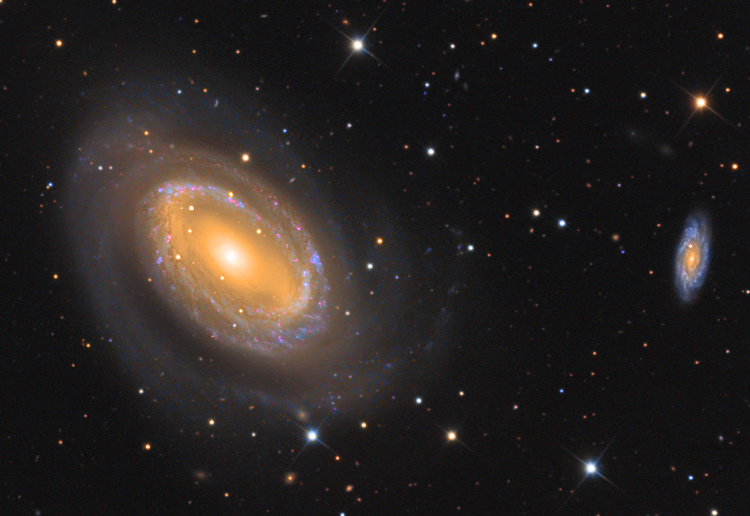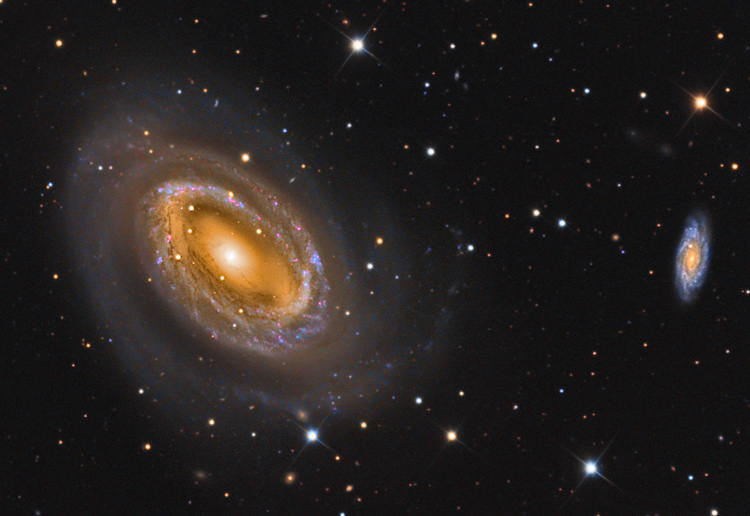|
Home
Recent Images
Galaxies
Nebulae
Natural Color
Narrow Band
H-Alpha
Clusters
Comets
Solar System
Observatory
Equipment
My Freeware
Tips & Tricks
Published Images
Local Weather
Terrestrial
Send Email
|
HDRMultiscaleTrans
|
This Page shows my process
for selectively applying the PixInsight HDR Multiscale Transform (HDRMultiscaleTrans).
Normally, this should be applied to 32
or 64-bit floating point data. With these images, the
bright galaxy core data is usually useable, even when it appears
completely burned out. In this case, we are using the final color image.
The below image was saved as a 16-bit TIF, from Photoshop, for loading
into PixInsight.
|

|
|
The below example is a
screenshot of the HDRMultiscaleTrans dialogbox with settings that I
typically use. For smaller galaxies, using only four layers often works
better. Simply try different numbers to get the desired effect.
If the image has galaxies
sizes that greatly differ, it may be necessary to do two separate
transforms. I may use five layers for the larger galaxy and four for the
smaller ones. In this case, blending these two images, with the original
data, becomes a two-step process..
Also experiment with the
number of iterations. However, I found that only one iteration usually
works best.
There are a few other
settings. So by all means experiment with them all.
|

|
The below image shows the
result from applying the settings in the above dialog box.
The next image shows the
result blended with the original image at 65%.
The final image is simply
the original shown for comparison.
If you like the result of
the transformation, then you are finished. However, in this case, I find
the affect a bit too aggressive. Also, I don't like what
the transformation did to the stars. So I have chosen to only blend the
galaxy data with the original image.
This is a simple PhotoShop process. First, paste the transformed image
onto the original as a new layer. Then adjust the opacity for the second
layer... 65% was used for this image. Use the lasso tool, with
appropriate feather settings, to select the two galaxies. Forty was used
for the large galaxy and 10 for the smaller. Finally, invert the
selection, cut away everything except the galaxies and flatten the
image.
|



|